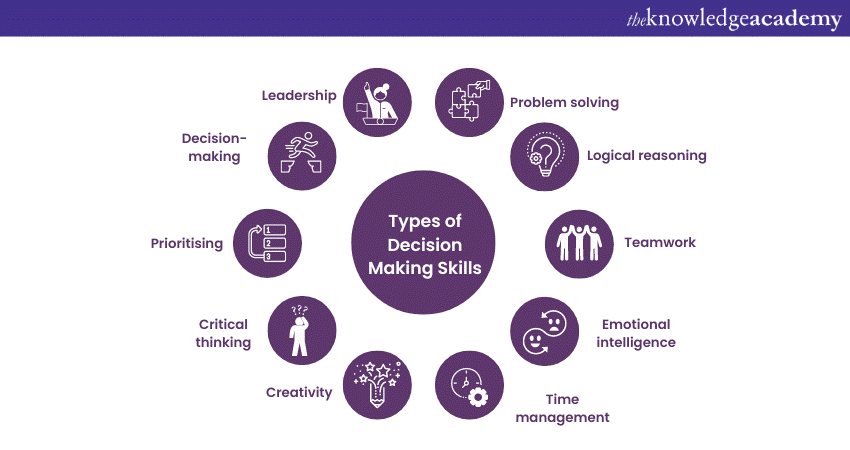In this fast-paced world, the ability to make sound decisions is often the key to achieving success, both personal life and career-wise. Yet many of us find ourselves grappling with choices, whether it’s a minor daily decision or a significant life change. Perfecting the art of strategic decision-making can unlock new opportunities and boost our overall well-being. This article aims to simplify the decision-making process by investigating ten successful techniques that can significantly improve your skills.

From the psychology behind effective decisions to practical frameworks that help you analyze options, we will explore how you can make better choices under pressure. Whether you are a leader facing tough calls or someone navigating daily dilemmas, understanding the role of emotional intelligence and intuition in your decision-making can enable you to act with certainty and focus. Join us as we explore strategies to overcome decision fatigue, avoid traps like paralysis by analysis, and ultimately learn how to make decisions that lead to a rewarding life.
Techniques for Smart Decision-Choosing
One of the key essential techniques for effective decision-making is to create a clear framework to navigate the methodology. This requires determining specific criteria for evaluating options, establishing priorities, and considering potential outcomes. By using resources such as decision matrices or pros and cons lists, individuals can systematically analyze their choices. This technique not only clarifies the decision-making path but also minimizes confusion and helps avoid the pitfalls of emotional bias.
Another critical approach is to cultivate emotional intelligence. Grasping your emotions and noticing how they impact your decisions can lead to more effective choices. By spending a moment to reflect on what you’re feeling and why, you can distill your instincts from the truth at hand. Incorporating mindfulness practices can enhance this dimension, allowing you to remain aware and focused, leading to more precise and more empathetic decision-making.
Lastly, reflecting from past decisions is vital for refining future choices. Contemplate on previous outcomes, both good and bad, to grasp the factors that led to those results. This retrospective analysis can disclose patterns in your decision-making process that you can utilize for growth. Adopting a mindset of curiosity and openness to learning fosters resilience, allowing you to adapt and hone your abilities without the burden of regret.
Grasping the Psychological Aspects of Choices
The choice-making process is significantly shaped by mental factors that impact how we interpret options and weigh potential outcomes. One of the crucial elements is cognitive biases, which can lead individuals to make poor decisions based on scarce information or emotional responses. For instance, the confirmation bias causes people to favor information that confirms their pre-existing beliefs, often ignoring contradictory evidence. Recognizing these biases is vital for honing the art of effective decision-making.
Emotional awareness also plays a critical role in making good choices. Recognizing and controlling emotions can help individuals navigate complex decisions, especially under stress. Those with strong emotional intelligence are more suited to handle pressure and assess the feelings of others, encouraging more deliberate choices. Integrating emotional awareness into decision-making can turn impulsive reactions into purposeful actions aligned with long-term goals.
Finally, the environment in which decisions are made plays a role to the psychology of choices. Surroundings, social influences, and time constraints can all impact our ability to analyze effectively and make smart decisions. For Extra resources , decision fatigue can kick in after prolonged periods of making choices, resulting in less than ideal outcomes. By being conscious of contextual factors and creating a favorable decision-making environment, individuals can improve their clarity and focus, culminating in better choices overall.
Conquering Hurdles in Making Decisions
One of the most significant challenges individuals face in decision-making is the overwhelming feeling of pressure, especially when stakes are high. In times of urgency, it is simple to rush into choices without thoroughly considering the implications. To combat this, you can employ techniques such as the strength of pause, which encourages taking a step back to analyze the circumstance calmly. This short moment of reflection allows you to gather your thoughts, minimize anxiety, and frequently leads to more balanced and informed decisions.
Another common hurdle is decision fatigue, a mental phenomenon that occurs when we are faced with too many choices throughout the day. As energy and mental clarity decrease, even simple decisions can feel incredibly taxing, leading to suboptimal outcomes. To mitigate decision fatigue, adopt daily habits that simplify your choices, such as prioritizing essential decisions early in the day or simplifying your choices. This organized approach will help maintain mental clarity and ensure you allocate your cognitive resources for the key decisions.
Lastly, fear of making the incorrect decision can freeze individuals, preventing them from acting altogether. This fear often originates from the need to achieve ideal outcomes and avoid potential regrets. To conquer this challenge, embrace a mindset that views decisions as opportunities for growth rather than risks. Additionally, consider the value of emotional intelligence in recognizing and managing your fears. By conditioning your brain to acknowledge that every decision—even those that do not yield the expected results—provides valuable learning experiences, you can approach decision-making with greater confidence and resilience.
